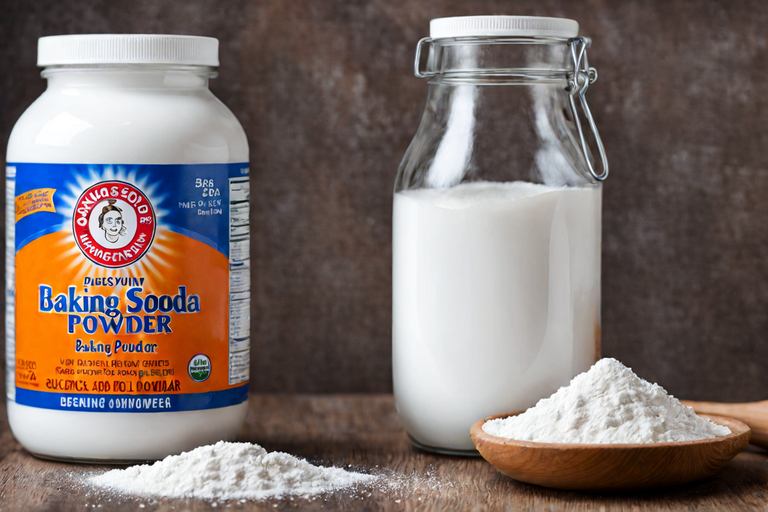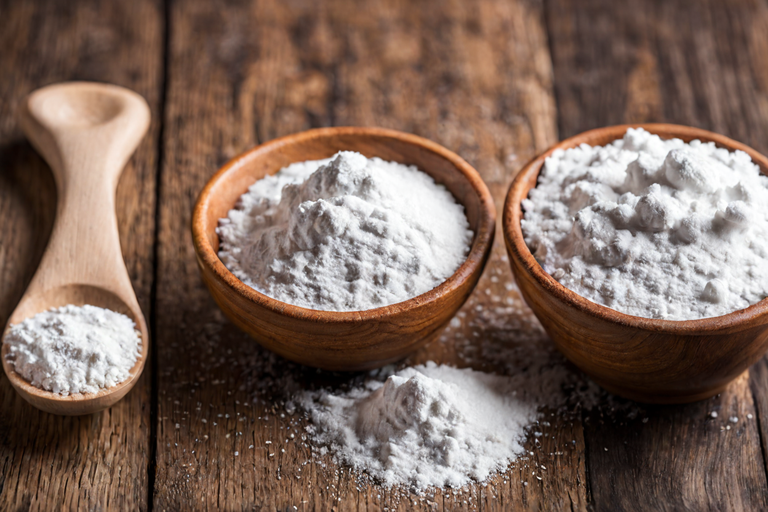Baking is a science, and understanding the chemistry behind your ingredients can make a huge difference in your results. Two of the most commonly confused ingredients in baking are baking soda and baking powder. While they may sound similar and are often used in recipes for similar purposes, they are not interchangeable and serve different roles in baking. This article aims to demystify these two essential ingredients, helping you understand when and how to use each one effectively.
What is Baking Soda?
The Chemistry of Baking Soda
Baking soda, also known as sodium bicarbonate, is a chemical leavening agent that is commonly used in baking. It is a base, and when combined with an acid, it reacts and produces carbon dioxide gas. This reaction is what causes dough or batter to rise, creating the light and airy texture in baked goods.
Common Acids Used with Baking Soda:
- Lemon juice
- Yogurt
- Buttermilk
- Vinegar
- Cream of tartar
Uses of Baking Soda
- Quick Breads: Baking soda is often used in recipes like banana bread or pancakes.
- Cookies: It helps create a crumbly and tender texture in cookies.
What is Baking Powder?
Composition of Baking Powder
Baking powder contains baking soda, but it also includes a dry acid (cream of tartar) and a starch, usually cornstarch, to prevent any chemical reaction during storage. Baking powder is essentially “self-contained,” meaning it doesn’t require any additional acidic ingredients to activate.
Types of Baking Powder
- Single-Acting Baking Powder: Reacts upon moisture exposure.
- Double-Acting Baking Powder: Reacts in two phases – once when moistened and again when heated.
Uses of Baking Powder
- Cakes and Muffins: Provides a light, fluffy texture.
- Various Baked Goods: Ideal for recipes without natural acids.

Key Differences Between Baking Soda and Baking Powder
1. Composition
- Baking Soda: Pure sodium bicarbonate.
- Baking Powder: Sodium bicarbonate with acid and starch.
2. Acid Requirement
- Baking Soda: Requires an external acid to activate.
- Baking Powder: Already includes an acid; only needs moisture.
3. Leavening Action
- Baking Soda: Immediate reaction with an acid.
- Baking Powder: Can have a delayed reaction, depending on type.
When to Use Baking Soda
- When an Acidic Ingredient is Present: Baking soda needs an acid to create the leavening effect.
- For Crispiness: Ideal in recipes where a crisp texture is desired, like cookies.
When to Use Baking Powder
- When No Natural Acid is Present: Since baking powder contains its acid, it’s suitable for recipes without acidic ingredients.
- For Light and Fluffy Textures: Perfect for cakes and other airy baked goods.
Can You Substitute One for the Other?
Substituting baking soda for baking powder or vice versa is tricky and not generally recommended, as it can significantly affect the outcome of your recipe. However, in a pinch, you can make some adjustments:
- Baking Soda for Baking Powder: Use a quarter teaspoon of baking soda for every teaspoon of baking powder, and add the necessary amount of acid.
- Baking Powder for Baking Soda: Use three times the amount of baking powder in place of baking soda.
Balancing Flavor and Texture
Understanding the balance between baking soda and baking powder is crucial for both flavor and texture. Too much baking soda can result in a soapy taste, while too little may not provide enough leavening. Similarly, excessive baking powder can cause baked goods to collapse or have a bitter taste.
Tips for Best Results
- Follow the Recipe: Stick closely to the measurements given in the recipe.
- Freshness Matters: Ensure your baking soda and powder are fresh for optimal results.
- Understand Your Ingredients: Knowing the acidity of your other ingredients can guide you in choosing between baking soda and powder.
FAQs About Baking Soda and Baking Powder
1. How Do I Test for Freshness?
- Baking Soda: Mix with vinegar; it should bubble immediately.
- Baking Powder: Mix with hot water; look for a bubbling reaction.
2. How Should They Be Stored?
Store both baking soda and powder in a cool, dry place, tightly sealed to prevent reaction with moisture.
3. Can I Make My Own Baking Powder?
Yes, mix two parts cream of tartar with one part baking soda and one part cornstarch.
Final Thoughts
Baking soda and baking powder are both crucial in baking, but understanding their differences and specific roles is key to successful baking. By knowing when and how to use each, you can ensure that your baked goods turn out perfectly every time. Remember, the magic of baking lies in the science behind these ingredients, so embrace the chemistry and enjoy the delicious results!

